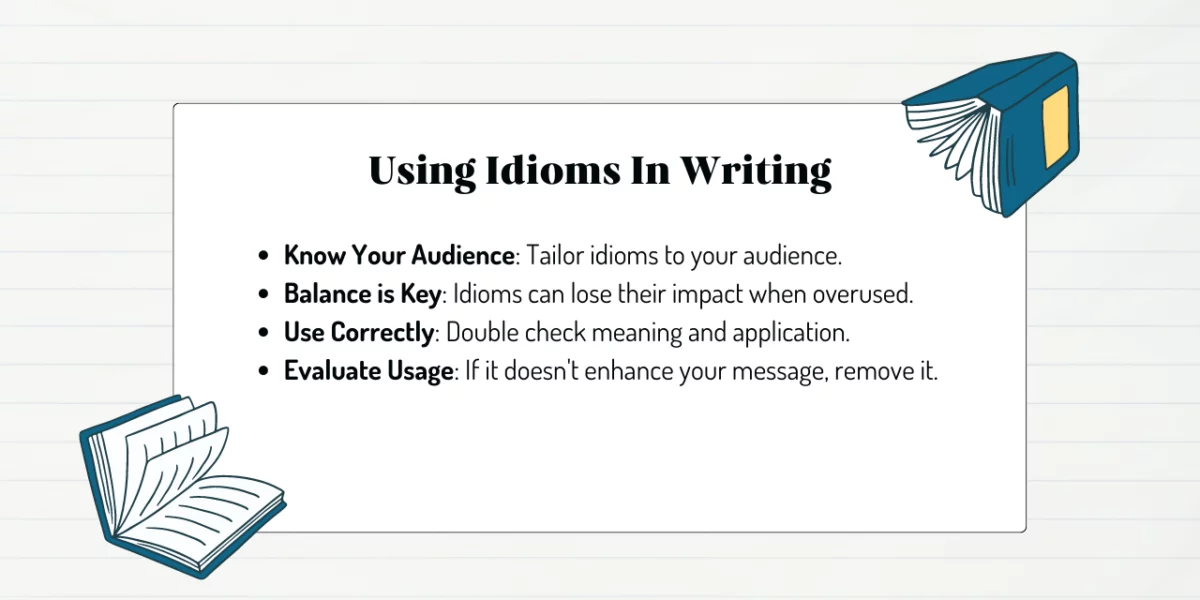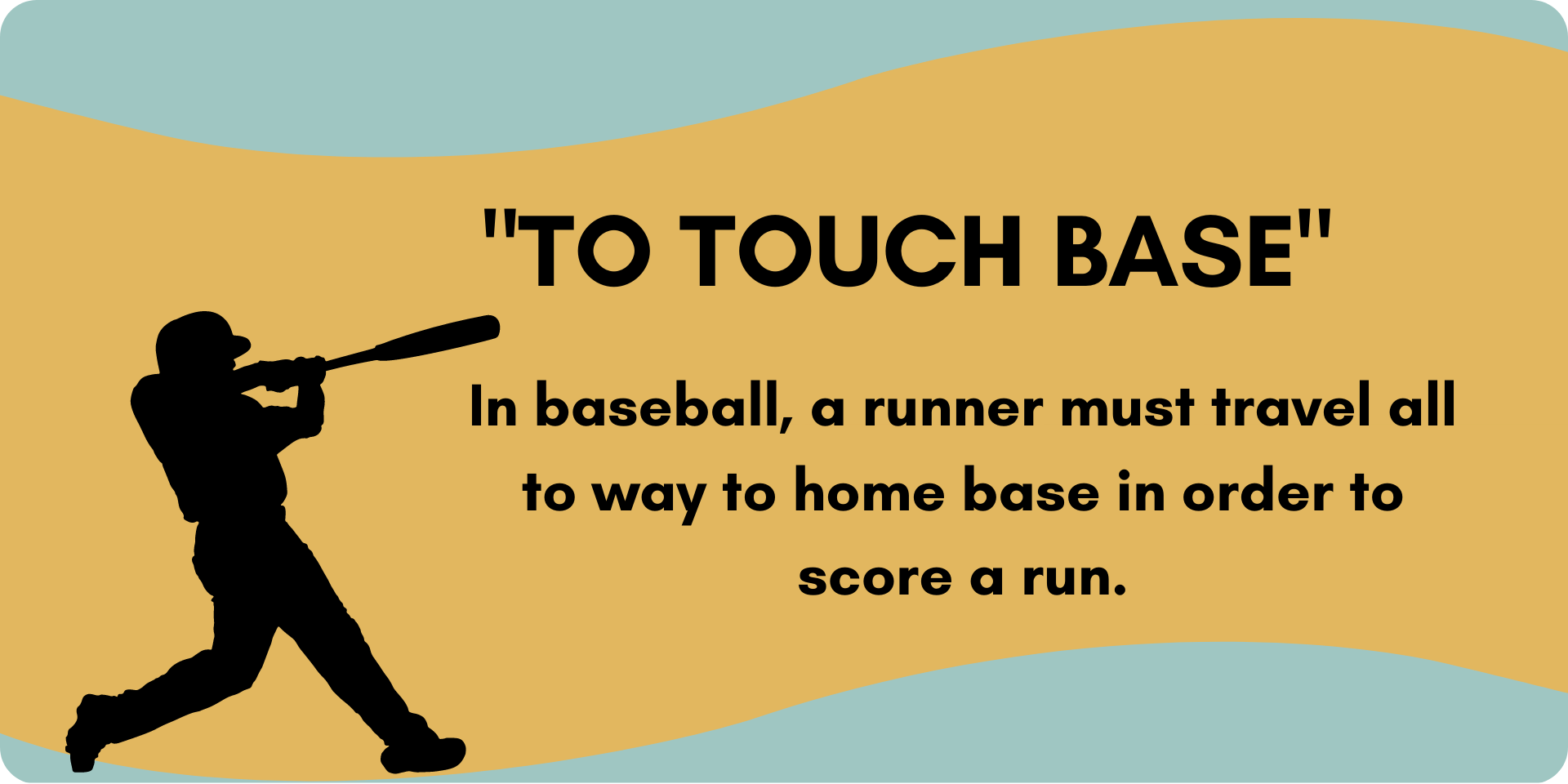Ever heard someone say something like “it’s raining cats and dogs” and wondered what they meant? Those quirky phrases are called idioms, and they have special meanings that aren’t always clear from the words themselves.
In this article, we’ll dive into what idioms are, how to use them in writing, and some popular examples.
What is an Idiom?
An idiom is an expression or phrase whose meaning cannot be deduced from the meanings of the individual words themselves. In other words, they are phrases or expressions that are not meant to be taken literally.
For example, when we say someone has “cold feet,” we don’t mean that their toes are chilly. Instead, we’re referencing their apprehension or hesitation about a situation.
Using Idioms in Writing
The Upside: How Idioms Can Help Your Writing
- Adds Color and Flavor: Just as spices give food its zest, idioms can add a distinctive flavor to make your writing more memorable. For instance, “he got cold feet” is more engaging than “he was nervous.”
- Conveys Complex Ideas Simply: Idioms can condense complex emotions or situations into a concise phrase. “Breaking the ice” is a lot shorter than explaining the process of making strangers feel more comfortable with each other.
The Downside: Potential Pitfalls of Using Idioms
- Alienates International or Unfamiliar Readers: Idioms are often culture specific. For someone unfamiliar with a particular culture, idioms can be confusing or misunderstood. A writer aiming for a global audience should be wary of using too many idioms.
- Can Seem Cliché: Overused idioms can make writing seem unoriginal or lazy. Phrases like “at the end of the day” or “bite the bullet” have been used so often that they’ve lost some of their impact.
- Dilutes Precise Meaning: Idioms are, by nature, figurative. If a piece of writing demands clarity and precision, idioms might not be the best choice as they can introduce ambiguity.
- Muddies Professional or Formal Writing: In academic, scientific, or formal business writing, idioms can come off as unprofessional or too casual.
Tips for Using Idioms Effectively
- Know Your Audience: Tailor your use of idioms to your audience’s familiarity and comfort level with them.
- Use Sparingly: Like any stylistic tool, idioms can lose their impact when overused. Balance is key.
- Ensure Correct Usage: Using an idiom incorrectly can undermine your message and credibility. If unsure, double check its meaning and application.
- Reassess in Editing: When revising, check if the idiom truly enhances the message or if it’s merely a filler. If it’s the latter, consider omitting or replacing it.

10 Examples of Common Idioms
- Bite the Bullet: This means to confront a difficult situation head-on or to do something challenging without showing fear. Historically, during wars when there was no anesthesia, soldiers would bite a bullet during surgery to cope with the pain.
- Let the Cat out of the Bag: This suggests revealing a secret. Perhaps once upon a time, a mischievous cat was let out of a bag, revealing a secret surprise.
- Jump on the Bandwagon: To adopt a popular activity or trend. This idiom dates back to when politicians would use a bandwagon for parades, and people would jump onto it to show their support.
- Hit the Nail on the Head: This means to describe exactly what is causing a situation or problem. Just like accurately hitting a nail with a hammer, one gets straight to the point.
- Burning the Midnight Oil: Working late into the night. Before electricity, people used oil lamps when staying up late.
- The Ball is in Your Court: It’s your decision or move now. This might have its origins from tennis, suggesting one’s turn to serve or play.
- Bite off More Than You Can Chew: To take on a task that is more than you can handle. It’s easy to visualize the trouble of biting into a massive sandwich and struggling to eat it.
- The Elephant in the Room: An obvious problem or issue that everyone’s ignoring. Picture an elephant in a small room; it’s hard to ignore, right?
- Throw in the Towel: To quit or give up. This comes from boxing, where a boxer’s trainer might throw a towel into the ring to signal surrender.
- Break a Leg: A way to wish someone good luck, especially before a performance. It’s a theatrical idiom where it’s considered bad luck to wish good luck.
If you’re keen on more examples, check out some of our other articles: A Day Late and a Dollar Short, As Thick as Thieves, Throw my Hat in the Ring
Conclusion
Idioms are expressions that convey ideas and emotions in unique ways. They often have distinct cultural and/or historical origins and are a vibrant aspect of language. When used in the right context, idioms can bring color and depth to our writing.






